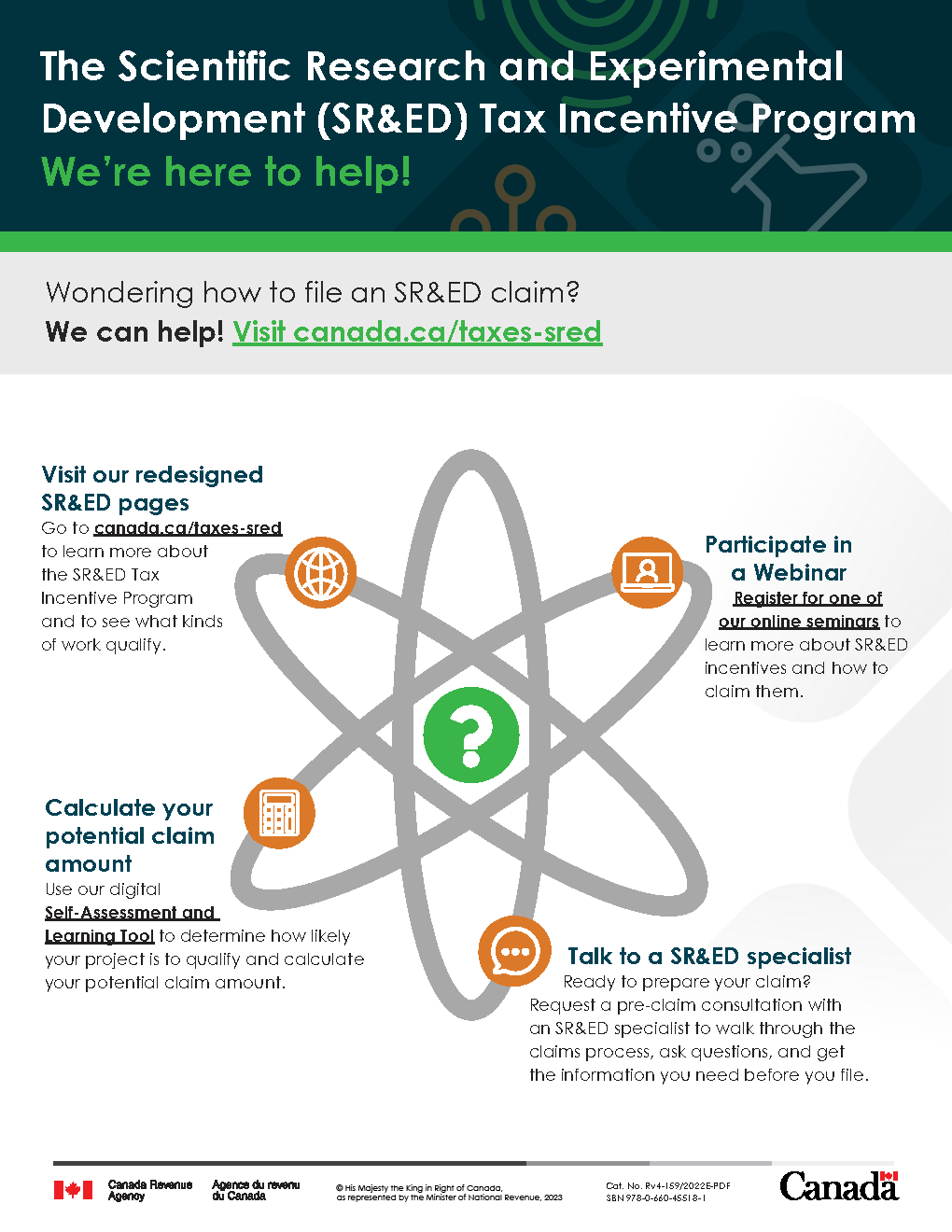SR&ED Books and Videos

If you are looking to increase your SR&ED knowledge we can point you in the right direction.
Below you will find some links to books on the topic, available for online ordering.
Books
For Practitioners
Dorombozi, Ron. (2015). “Concepts and Strategy for an SR&ED Practitioner: A Primer to the Canada Revenue Agency’s Scientific Research and Experimental Development Program.” CreateSpace Independent Publishing Platform; 1st edition. 218 pages.
This book seeks to explain SR&ED issues such as program eligibility, documentation, technical writing, financial topics, how to file a claim, and how to survive a review. His target audience is new graduates and professionals looking to familiarize themselves with the program in order to produce better claims, more easily understood and more readily accepted by the CRA.
Sweeny, Terrance A. (2007). “Maximizing Corporate Tax Incentives for Scientific Research and Experimental Development.” LexisNexis Canada. (pages unavailable)
This book contains examples of forms to be filled out as well as helpful appendices such as significant SR&ED cases and articles from 1987 to 2007.
Note: There have been several significant changes to the SR&ED program since the time of writing.
For Managers
Bélanger, Lucie, (2014). “The Canadian SR&ED Tax Incentives Handbook.” Wolters Kluwer 2nd Edition. (pages unavailable)
This manual provides practical tools to accountants, tax experts, lawyers and scientists interested in learning about and applying for the SR&ED tax credit.
Siddiqui, Zafar & Siddiqui, Zak. (2011). “The Z-book on Scientific Research & Experimental Development: Deserving is Not Enough.” iUniverse Self Publishing Company. 144 pages.
Written with the executive in mind, this book provides an overview of the SR&ED program and why it is important for organizations to determine eligibility so they don’t lose out on potential tax credits.
For Academics
Doern, Bruce; Castle, Peter; and Phillips, Peter WB. (2016). “Canadian Science, Technology, and Innovation Policy.” McGill University Press. 464 pages
An overall look at Canada’s level of competitiveness in the fields of science and technology. In addition, this book provides an overview of key government departments involved in science, technology and innovation. Further, delving into the political sphere, the authors provide information for academics and practitioners regarding science advice across prime ministerial eras.
Cauchi, Laura. (2014). “Driving Innovation.” Lambert Academic Publishing. 224 pages
Using a public consultation process in 2007 – 2008, Cauchi sought to determine how SR&ED applications influenced, or were influenced by public policy interests and knowledge-producing industries in science & technology. This appears to be more academic in nature than an assistive tool in applying for the SR&ED tax credit.
Videos and Infographics
Canada Revenue Agency
The following videos and infographics are found on the Government of Canada Website.
This information do not replace the in-depth knowledge of a professional SR&ED consultant.
2024 CRA update on SR&ED Program – Apr 3, 2024
CPA Canada co-hosted a webinar with the CRA to review updates to the SR&ED Tax Incentive Program. This session covered an overview of the program results from 2023 and highlighted the upcoming initiatives that will be undertaken by the CRA to enhance program efficacy in 2024. The CRA representative also responds to some key questions heard from CPA Canada’s SR&ED Committee. Speaker(s): Susan Bishop (Canadian SRE&ED and Business Tax Incentives Practice Leader), Lorraine Redekop (CRA) Disclaimer: The opinions and views expressed in presentations by speakers are those of the individuals and do not necessarily reflect or represent the official views, policy or position of CPA Canada or the CRA.
CRA update on SR&ED Program – Dec 2, 2022
CPA Canada co-hosted a webinar with the CRA to review updates to the SR&ED program. In this session, CRA provides an overview of the program and highlights upcoming initiatives that will transform it. CRA also reviews some of the most common trends they are seeing on the field and answers some of the top questions heard from CPA Canada’s SR&ED Committee. Speaker(s): Susan Bishop (EY), Lorraine Redekop (CRA), Mary Louise Graham (CRA), Qumber Rizvi (CRA) Disclaimer: The opinions and views expressed in presentations by speakers are those of the individual and do not necessarily reflect or represent the official views, policy or position of the Chartered Professional Accountants of Canada.
CRA Infographics
The SR&ED Tax Incentive Program
CRA SR&ED How To File
Work Eligibility
The SR&ED Tax Incentive Program
Work Eligibility
Other Videos
SRED Stakeholder Videos
SREDStakeholder.ca is a non-profit group working with SR&ED tax credits in Canada. Their primary audience is tax preparation professionals, SR&ED claimants and other SR&ED industry groups. Membership is free, please visit their website.
Presentations from the Nov 30, 2023 SREDStakeholder.CA webcast.
Connect With Us!
Share your thoughts by commenting below or joining the conversation on our LinkedIn page, Facebook page, or via Twitter.


